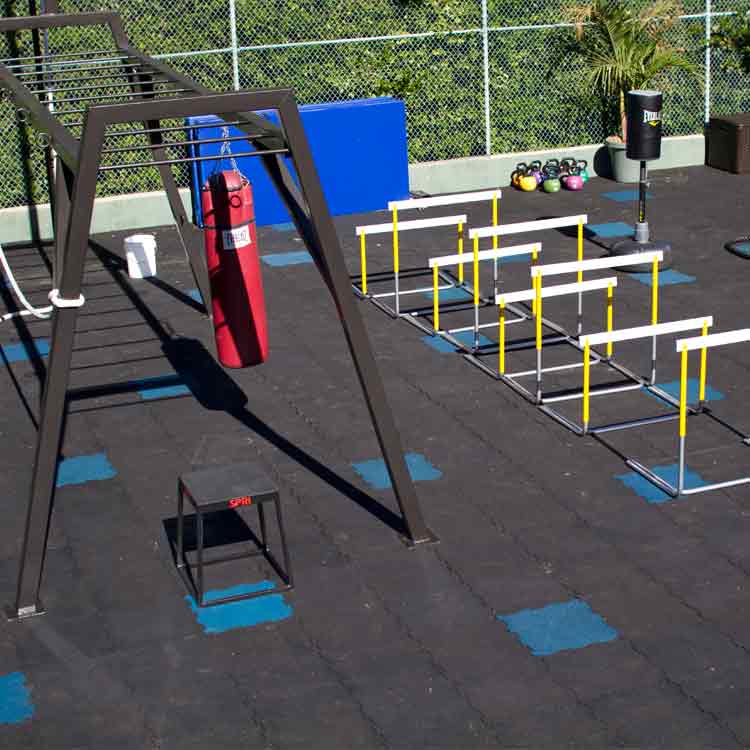 “Amazon.” To Facebook and Twitter addicts of the 21st century, this word resonates as the name of multinational e-Commerce site Amazon.com — colloquially known as simply “Amazon.” To walking encyclopedias and comic book enthusiasts, an “Amazon” is a member of an all-female society of super humans. For the rest of America with access to the Discovery Channel via cable television, “Amazon” refers to the Amazon Rainforest. None of these definitions seem to have much to do with eco rubber flooring, but you might be surprised to learn that the Amazon Rainforest and natural rubber mats are intricately connected.
“Amazon.” To Facebook and Twitter addicts of the 21st century, this word resonates as the name of multinational e-Commerce site Amazon.com — colloquially known as simply “Amazon.” To walking encyclopedias and comic book enthusiasts, an “Amazon” is a member of an all-female society of super humans. For the rest of America with access to the Discovery Channel via cable television, “Amazon” refers to the Amazon Rainforest. None of these definitions seem to have much to do with eco rubber flooring, but you might be surprised to learn that the Amazon Rainforest and natural rubber mats are intricately connected.
Amazingly, the Amazon Rainforest makes up over half of the world’s remaining rainforests and is the most species-rich tropical rainforest in the world. One very specific species of plant that is indigenous to the Amazon is the Hevea brasiliensis, or Para rubber tree. This very special tree is — you guessed it — the source of natural rubber that we use in eco rubber flooring and eco floor mats.
The Para rubber tree naturally produces rubber sap, which is either yellow or white in color and, once vulcanized, can be made into eco-friendly rubber flooring products.
 Rubber sap is extracted through a process called “tapping.” Indigenous Central Americans who first discovered the properties of natural rubber developed the process of tapping, collecting the sap and then treating it with greasy smoke. The end product was extremely similar to contemporary cured rubber. Central Americans crafted this rubber into various items, including rubber boots, water jars, and hollow balls for sporting applications.
Rubber sap is extracted through a process called “tapping.” Indigenous Central Americans who first discovered the properties of natural rubber developed the process of tapping, collecting the sap and then treating it with greasy smoke. The end product was extremely similar to contemporary cured rubber. Central Americans crafted this rubber into various items, including rubber boots, water jars, and hollow balls for sporting applications.
Allegedly, Christopher Columbus reported watching the indigenous American people play a game with these hollow rubber balls when he arrived in North America. The game, "Tlachtlic," can be described as a cross between modern-day basketball and football, with the goal being to shoot a rubber ball through a stone ring. It could be said that these rubber balls and the game of “Tlachtlic” were the first version of modern day basketball.
Today, natural rubber harvested from Para rubber trees is made into a wide variety of objects. One important rubber object is rubber flooring which can be used to protect residential, commercial, and industrial floors. Rubber kitchen mats, for example, are made with natural and nitrile rubber for water and oil resistance. Rubber floor mats like these may be used to keep water, greases, oils, and other liquids off of commercial kitchen floors.
Natural rubber sap can also be used to make premium eco rubber flooring rolls. These rubber floors may be used in commercial and residential flooring areas to protect vinyl or linoleum. Natural rubber floor mats don’t just protect sub-floors, they also protect people! Rubber, which is naturally slip resistant and elastic, provides varying degrees of anti-slip safety and comfort in these applications.
Whether it is tapped from the Amazon Rainforest or harvested on a Sri Lankan rubber farm, natural rubber sap is an extremely versatile material that we use every day. From modern day basketballs to tough eco floor mats — the scope of rubber’s many uses is truly staggering!